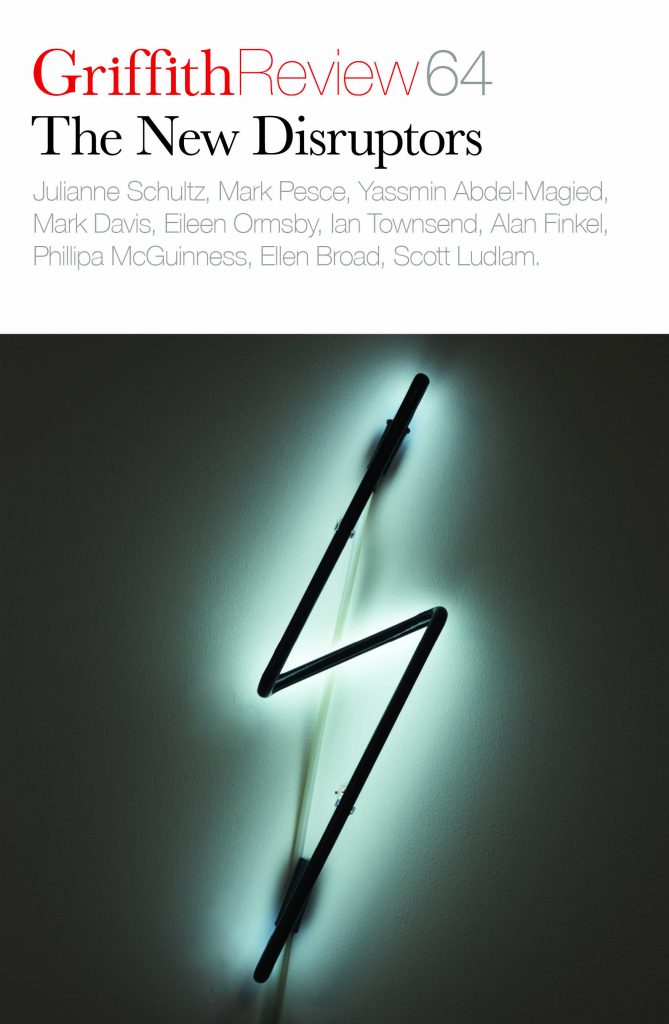Featured in

- Published 20190507
- ISBN: 9781925773620
- Extent: 264pp
- Paperback (234 x 153mm), eBook

Already a subscriber? Sign in here
If you are an educator or student wishing to access content for study purposes please contact us at griffithreview@griffith.edu.au
Share article
More from author

Learning from forgotten epidemics
ReportageA panic had set in and people from the infected area were hurrying to be inoculated. The crush was dreadful and the crowd fought...
More from this edition

Offshore
PoetryThe gathering with placards is, give or take, the normal size. The speech is not unlike the last but tweaked for the occasion, a five-year anniversary for which the...

Seeing through the digital haze
IntroductionTHERE IS SOMETHING seductive about aircraft vapour trails, those long streaks – ice, carbon dioxide, soot and metal – that slice the sky. I’ve often...

When big tech met books
MemoirTHE FIRST TIME I went to the Frankfurt Book Fair in 2008, I had an appointment with Google. Its stand in Hall Eight was...